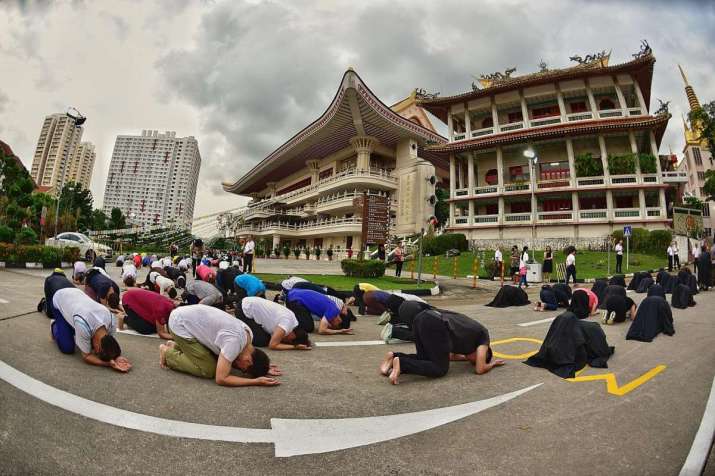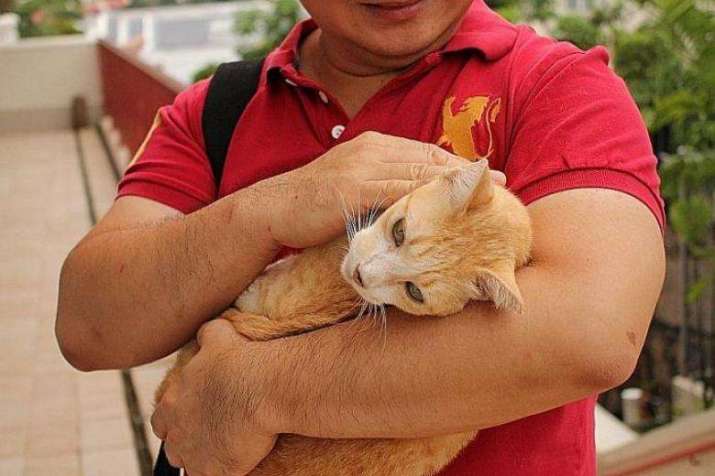
As Buddhist communities gather in observance of Vesak, the Singapore Buddhist Federation (SBF) and other experts are encouraging Buddhists in Singapore to consider alternatives to the practice of life release—making merit by releasing captive animals into the wild—during Vesak celebrations. Expressing concern over the unintended impact of life release on ecosystems and on the animals themselves, they have been urging Buddhists to consider more skillful expressions of compassion, such as adopting a meat-free diet or supporting animal shelters.
“It will be ironic to consume meat and liberate life,” said Ven. You Wei, chairman of the SBF’s education committee. “Vegetarianism saves many more animal lives than life liberation.” (The Straits Times)
Buddhists in Singapore observed Vesak on 29 May this year. As in many other societies, they traditionally release animals, including fish, birds, turtles, and crickets, into the wild during Vesak, as a gesture of compassion and to repent for sins. The proactive practice of life release is known as fang sheng among Chinese Buddhists, and jiwitte dana (the gift of life) among Theravada Buddhists.
The New Paper reported that 80–90 per cent of released animals die within a day, and those that do survive could pose a danger to the balance of the local ecosystem. Singapore’s National Parks Board has been working with volunteers to educate and advise the public against releasing animals into reserves and natures areas. Those caught releasing animals into nature reserves can face a fine of up to S$50,000 (US$37,400), a jail term of up to six months, or a combination of both.

Dr. Neena Mahadev, professor of anthropology at Yale-NUS College who specializes in the study of religion, said Singaporean Buddhists “tend to be mindful of the broader ecosystem and are educating themselves on which animals are appropriate for release and which will survive in the wild.” (The Straits Times)
“Animal release if done in the right context is not an issue, for example releasing a captured wild animal into its original habitat,” said Chan Chow Wah, a fellow of the Royal Anthropological Institute in Britain and a Buddhist. “In urban places like Singapore, where animals for sale are bred in captivity, releasing these animals causes suffering as they are unable to survive when they are released.” (The Straits Times)
According to Chan, Buddhists can show their compassion to animals by adopting a vegetarian or vegan lifestyle, or by engaging in animal rescue work and supporting animal shelters—all activities that can take place throughout the year.
Although the practice of life release is aimed at saving lives, it often does more harm that good. As Dr. Tan Wee Hin, professor of biological science at the National University of Singapore, noted: “Introducing animals such as red-eared terrapins and fish can change the environment, such as the quality of water, to become harmful to other species and increase the competition for limited resources.” (The Straits Times)
Life release has been growing in popularity in Buddhist communities around the world. Before being freed, the animals are blessed by Buddhist monastics or devotees, and the accumulated merit is dedicated to someone who is ill or has died in the belief that the person will benefit. However, the majority of animals will not survive long after being released and many of them pose a threat to the native wildlife.
See more
Buddhists advised not to release animals for Vesak (The Straits Times)
Buddhist groups step up reminders to followers to avoid releasing animals on Vesak Day (The Straits Times)
Vesak Day practice of releasing animals harms ecosystems (The New Paper)











